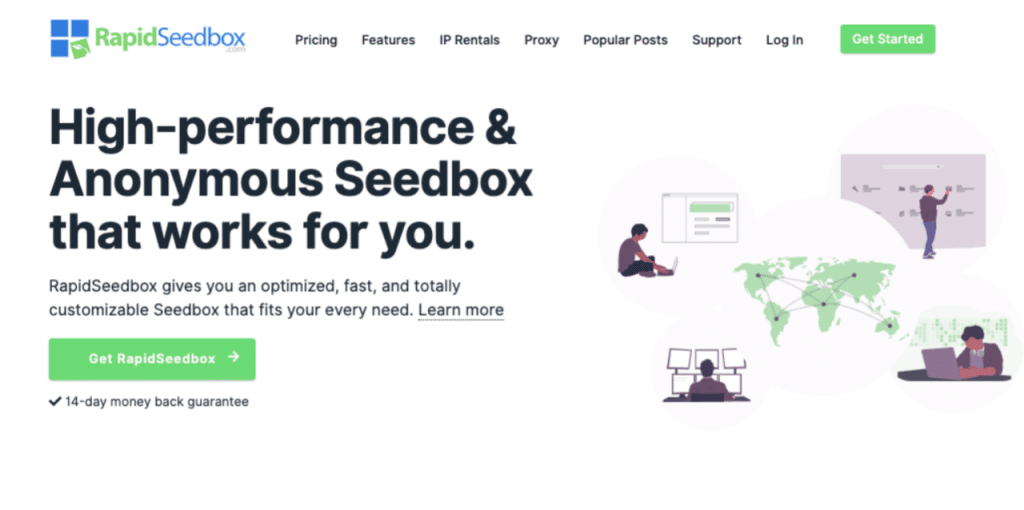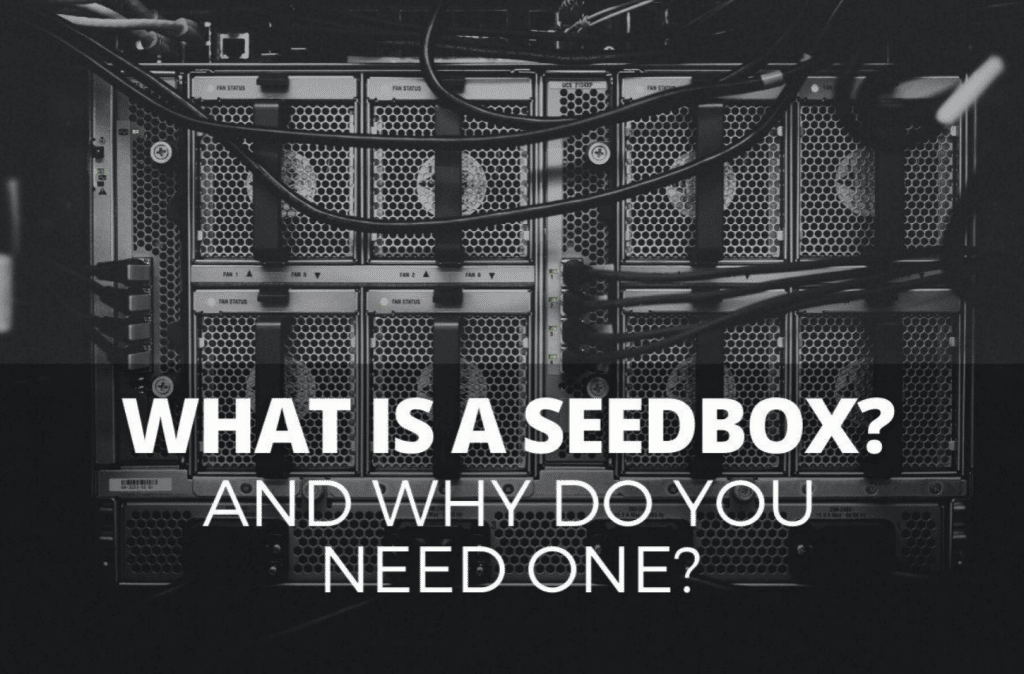In simple words, a seedbox is a server designed explicitly for seeding torrents. If you are a serious torrenter, consider getting a seedbox. A seedbox will give you all the anonymity, speed, and flexibility you need for your torrenting activities. Leave your seedbox on 24/7, seeding, sharing, and downloading torrents without using your personal computer.
In this post, we’ll go through the fundamentals of BitTorrent, how seedboxes were born, what is a seedbox, local vs. cloud-based seedboxes, and how to use one?
BitTorrent Fundamentals:
BitTorrent is a decentralized Peer-to-Peer (P2P) file-sharing mechanism. It does not distribute files using a central server as SFTP and HTTPS do; instead, it distributes files using a decentralized P2P approach.
BitTorrent shares files as follows:
- BitTorrent uses something referred to as torrent files (.torrent). Torrent files have the information or metadata related to the content and server tracker information. Remember that torrent files do not contain the media; they are just sets of instructions that point a torrent client on where to go and what to do to obtain the correct data.
- A torrent file is loaded into a torrent client. A user loads the file into the torrent client by importing it or using a magnet URL. The client (uTorrent, Transmission, Vuze, BitTorrent, etc.) reads the torrent file and connects to the tracker (public or private) appointed in the torrent file. The torrent file also contains information on how to put together the content.
- The client looks for peers. The torrent peers are torrent clients running on a computer somewhere on the Internet. The local torrent client can find other peers using a “tracker” server or the server-less (tracker-less) method. Torrent clients connect to the tracker, which shares the IP of the other peers participating in the same torrent swarm. The client may also use DHT (Distributed Hash Table), a tracker-less method where peers can find IP addresses of other peers stored in a DHT using a BitTorrent info-hash as the key.
- Keeping an alive and healthy torrent swarm. Peers store the content on their computers. The more peers share the same content (the torrent swarm is active and healthy), the quicker and easier other peers will download. The BitTorrent clients who share their complete content copy are known as seeders. The clients with an incomplete copy of the content, which are uploading or downloading content simultaneously, are known as leechers.
Seeders are vital for keeping the content alive and sharable
Seeders have either uploaded the content (created a new torrent) or downloaded a 100% copy of the file and are sharing it. The key within BitTorrent P2P is sharing. Seeders keep torrents alive because they continue sharing the content even though they have the full copy. They would share the content endlessly or up to a point.
What is a Seedbox?
A seedbox is a computer (box) dedicated to torrent sharing (seeding). It is usually a high-performance machine, Virtual Private Server (VPS), or any instance with torrent software and access to high-speed Internet.
When you use a seedbox, you usually share and download torrents 24/7. Seedboxes free your home and personal computer from resource- and bandwidth-hungry torrenting.

Seedboxes are also perfect for the demanding sharing ratio from private trackers. Private trackers are closed torrenting communities with rich libraries. They protect themselves and their community from leechers and copyright trolls. Being a member of a private tracker provide you with secure and fast access to amazing, updated, and specialty media libraries. To be a member of a private tracker, you’ll need to keep up a demanding seeding to leaching ratio. That means you’ll sometimes need to upload more than what you can download. Seedboxes are exceptional to keep up the demanding “sharing ratio” of private trackers.
On-premises vs cloud-based seedboxes
a. Cloud-based seedbox
Seedboxes are generally cloud-based servers offered by online seedbox service providers through different plans. When you rent a seedbox server, you usually have choices such as:
- Virtual Private Server (VPS) or bare-metal.
- Dedicated or shared.
- Fully managed or unmanaged.
Renting a cloud-based seedbox and paying for a monthly subscription can be a wiser investment if you are just testing a seedbox out. In addition, paying for a monthly subscription seedbox also helps take away the headache of hardware and software implementation and management. Cloud-based seedboxes are also built with performance, speed, and storage.
b. On-premises Seedbox
Although a seedbox is usually something you “rent,” you can technically build your own. Some people choose to develop their own local seedbox server. They typically buy the entire equipment dedicated for the seedbox and leave them on 24/7. They buy the computer, choose the proper Internet speed, they install the right OS and seedbox software.
Building your own local (home-based) seedbox requires many resources, knowledge, and management. You’ll need to install everything, use your resources (utilities, space, hardware), and manage updates and patches. The advantage of an on-premises seedbox is that having your seedbox gives you more control and ownership.
How to use a seedbox?
To start with a seedbox, you’ll need to subscribe to a service. Once you subscribe, you’ll get an email with information on accessing the “seedbox portal” or seedbox dashboard. Seedbox portal is usually an online platform where you can see your account details, tickets, seedbox access information, other services such as FTP, streaming, Rsync, VPN, etc.
You are looking for the seedbox access information, including access method (web, remote desktop, SSH, etc.), IP, credentials (username/password), and port.
- One of the simplest ways to access a seedbox is through a remote torrent client like uTorrent Remote.

- Enter the Computer name and password, and you’ll be inside uTorrent to start seeding your torrents.
- The seedbox will download the content to an online (cloud-based) storage.
- Then, you can transfer your downloaded content to your premises with a secure file-sharing mechanism such as SFTP, FTPS, or Rsync. If you don’t want to transfer the content or download it to your premises, you can also stream it with services such as Plex or Kodi.
Final Words
Seedboxes are VPS or physical machines designed and built explicitly for torrenting. If you are a serious torrenter, consider using a seedbox.
You’ll benefit not only from privacy, security, and high-speed, but also from other services like streaming, automation, and remote management.
